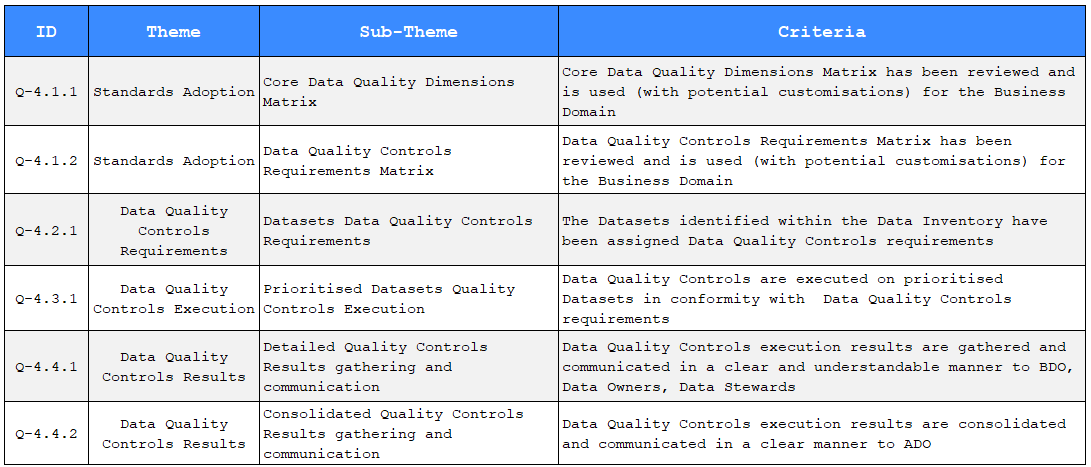Progress monitoring
Controls Practice Assessment template

Controls Adoption: ensures that a framework for categorizing different data control types has been reviewed and, if necessary, customized for application within the specific business domain. This would involve establishing control standards that suit the unique risks and compliance requirements of the business.
Controls Adoption: this assesses whether a matrix that outlines the requirements for data controls has been reviewed and adapted to fit the business needs. It may include an evaluation of control effectiveness, control frequency, and control ownership.
Data Control Requirements: This checks whether datasets identified within the data inventory have been assigned specific data control requirements based on their sensitivity, regulatory needs, and criticality to the business operations.
Data Control Execution: assesses if data controls have been implemented and are actively running on prioritized datasets in accordance with their assigned data control requirements. This could include access controls, data encryption, and integrity checks.
Data Control Results, Detailed Control Results: ensures that the outcomes of the data control activities are collected systematically and communicated effectively to Business Data Owners (BDO) and Data Stewards. This would involve detailed reports on control breaches, incidents, and corrective actions taken.
Data Control Results, Consolidated Control Results: involves consolidating data control results and effectively communicating them to the appropriate Data Owners and Stewards. It includes providing a high-level view of control performance and alignment with the business’s data governance strategy.
Self-assessment templates
Please refer to the Data Quality Framework documentation center.